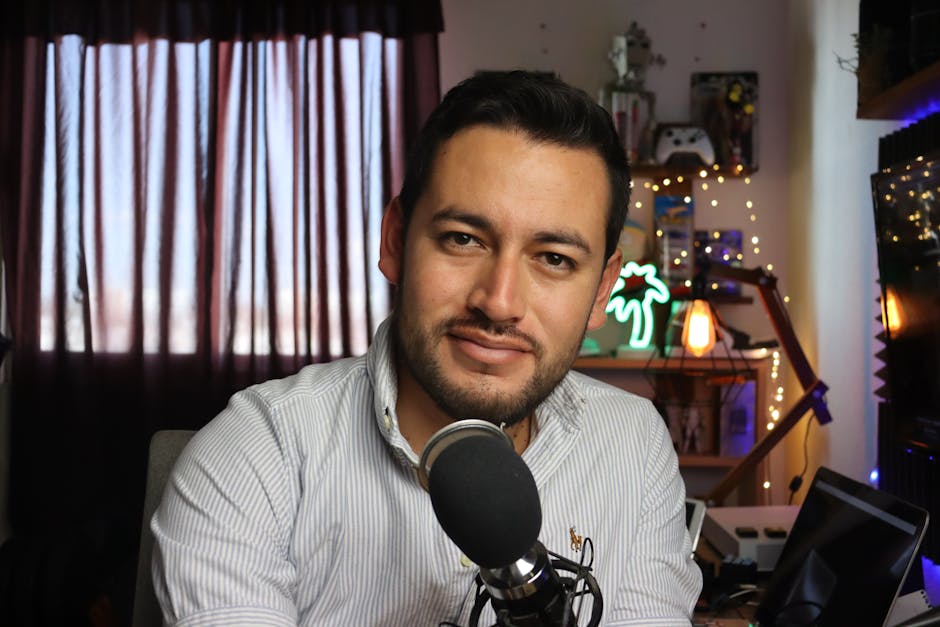My Guide to Submitting Your Podcast to All Major Directories (spotify, Apple).
So, you’ve poured your heart and soul into creating a fantastic podcast. The episodes are recorded, edited, and sound incredible. But what good is a masterpiece if no one can find it? The crucial next step – and often the most confusing for new podcasters – is getting your show listed on all the major podcast directories. This isn’t just about presence; it’s about discoverability, reaching your audience wherever they listen, and truly launching your voice into the world. As someone who’s navigated these waters multiple times, I’m here to simplify the process. This isn’t just a generic checklist; it’s *my* guide, built on experience, to help you confidently submit your podcast to the essential platforms, with a special focus on the giants: Spotify and Apple Podcasts.
Laying the Groundwork: Essential Preparations Before Directory Submission
Before you even think about clicking “submit” on any platform, there are foundational elements you need to have firmly in place. Think of these as your podcast’s digital passport – without them, you won’t get far. The good news is that these preparations are largely universal, meaning you do them once, and they serve you across all directories.
Your Podcast’s Digital Fingerprint: The RSS Feed Blueprint
At the heart of every podcast submission is your RSS (Really Simple Syndication) feed. This XML file is generated by your podcast hosting provider (like Libsyn, Buzzsprout, Anchor, Transistor, etc.) and contains all the crucial information about your show: episode titles, descriptions, audio files, artwork, categories, and more. Directories don’t host your audio; they simply read this RSS feed to display your content to listeners. Ensure your host provides a valid, publicly accessible RSS feed URL. It’s the single most important piece of information you’ll need.
A healthy RSS feed includes:
- Show Title: Clear, concise, and accurately reflects your podcast.
- Show Description: A compelling summary that entices new listeners.
- Podcast Artwork: A high-resolution square image (typically 1400×1400 to 3000×3000 pixels, JPG or PNG, RGB color space). This is your show’s visual identity!
- Author/Owner Information: Your name or brand, and an email address for contact and verification.
- Category Tags: Relevant categories that help listeners find your show (e.g., “Comedy,” “True Crime,” “Technology”). Most directories use Apple’s category standards.
- Language: The primary language of your podcast.
- Explicit Tag: Crucial for content that might be considered explicit. Mark it appropriately to avoid issues.
Double-check all this information within your hosting platform’s settings. Inaccuracies here will ripple across all directories.
Unlocking Apple Podcasts: Your Pathway to Millions of iOS Listeners
Apple Podcasts remains a colossal force in the podcasting world, especially for iOS users. Getting listed here is non-negotiable for broad reach. The submission process is straightforward but requires attention to detail through their platform, Apple Podcasts Connect.

First, you’ll need an Apple ID. If you have an iPhone, iPad, or Mac, you likely already have one. If not, it’s free and easy to create. Once logged into Apple Podcasts Connect, you’ll see an option to add a new show.
Walking Through the Apple Submission Steps
- Click the “Add Show” Button: Usually a plus (+) icon or a clear button on the dashboard.
- Enter Your RSS Feed URL: Paste the RSS feed URL you obtained from your podcast host. Apple will then pull in all the information from your feed.
- Review and Verify: Apple Podcasts Connect will display a preview of your podcast using the data from your RSS feed. This is your chance to meticulously review everything: show title, description, artwork, categories, language, and explicit tags. If anything looks off, go back to your podcast host’s settings and correct it, then refresh the feed in Apple Podcasts Connect.
- Owner Verification: Apple needs to confirm you own the podcast. They do this by sending a verification code to the email address listed in your RSS feed’s owner tag. Enter this code into Apple Podcasts Connect.
- Submit for Review: Once everything is verified and looks correct, hit the “Submit for Review” button. Apple’s team will then manually review your podcast to ensure it meets their guidelines. This usually takes a few business days, but can sometimes be quicker or longer depending on their volume.
- Confirmation: You’ll receive an email notification once your podcast is approved and live on Apple Podcasts. Congratulations!
Patience is key during the review phase. Resist the urge to resubmit multiple times, as this can actually prolong the process.
Navigating Spotify for Podcasters: Reaching a Vast, Diverse Audience
Spotify has rapidly become a dominant force in podcast listening, attracting a massive and diverse audience, often including many who aren’t traditional podcast listeners. Getting your show on Spotify is absolutely critical for expanding your reach. Their platform, Spotify for Podcasters, is user-friendly and efficient.
Your Journey Through Spotify’s Submission Portal
Similar to Apple, you’ll need a Spotify account to get started. Head over to Spotify for Podcasters and sign in. If you don’t have an account, you can create one easily using your email or Facebook.
- Click “Get Started”: Or “Add Your Podcast” if you’re already logged in.
- Paste Your RSS Feed URL: Just like with Apple, Spotify will ask for your podcast’s RSS feed. Paste it in and click “Next.”
- Verify Your Podcast: Spotify will send a verification code to the email address associated with your RSS feed. Retrieve this code from your inbox and enter it into the Spotify for Podcasters portal. This confirms you’re the owner.
- Add Podcast Information (if not already present): While Spotify largely pulls from your RSS feed, you might be prompted to confirm or select additional details like:
- Category: Choose the most relevant category for your show.
- Language: Select your podcast’s primary language.
- Country: The country where your podcast is primarily produced or targeted.
- Content Rating: Mark whether your content is “Explicit” or “Clean.” Be honest here to avoid issues.
- Review and Submit: Take a final look at all the information. Once satisfied,




Post Comment